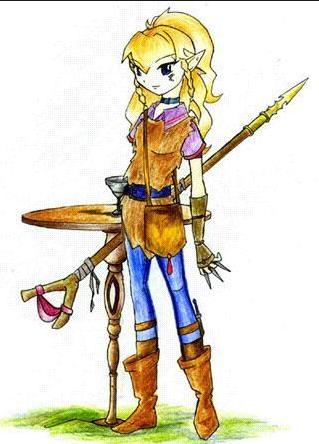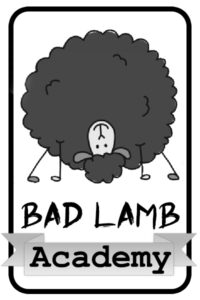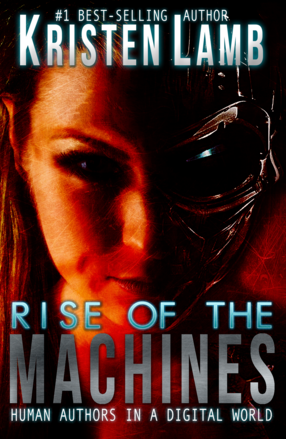Recently, I’ve added homeschooling The Spawn to the list of what I already do. Blog, write books, teach, run two small businesses and keeping a house clean, the yard mowed, and my family fed. As an introvert who works from home, it’s easy to realize you no longer leave the house and are talking to yourself way more than is healthy. Thus, I’ve been on a mission to break some patterns and do what might scare me (talking to other people in person).
Btw, writers don’t count.
Welcome to Nerd Land
In the spirit of this “Doing Stuff Differently” I joined some friends for a monthly game of Dungeons and Dragons, and took Hubby as a hostage teammate. I hadn’t played D&D since I was in high school so there is a learning curve. But one thing that struck me is how being an author had changed my perspective. The first duty I had was to choose and create characters for me and Hubby.
When I looked at who was playing what, I spotted a big problem. The existing party was far too homogenous, so the only real conflict was going to come from whatever bad creatures they happened to fight. What did I do? My writer’s mantra.
THROW A ROCK IN IT.
Instead of playing a ranger as I always had, I chose a Kender (Halfling). Kenders are loved and despised. They are tiny and childlike and have an affinity for anything shiny (yeah, it fits). They can pick locks, spot and disarm traps, and they have boundless curiosity paired with sticky fingers and that can land them in hot water.
Since Kenders place no material value on anything, stealing to them is more…”borrowing.” Also, they have no social filters and say whatever they’re thinking. One of their strongest powers in a fight is “the taunt.” They can get the enemy so riled, bad guys don’t think clearly and make mistakes. They are a chaotic good character, emphasis on the chaotic.
Now pair this Kender with Hubby who is a Lawful Good Paladin. BOOM!
Hey, I only “borrowed” his sword. Was totally going to give it back *rolls eyes*.
But what was interesting about our first game with the other party members, is that they all groaned and wanted roasted Kender. Apparently a Kender played poorly is simply a pain in the a$$. Like any D&D character, it is up to the person playing the role to breathe in life and to dig below the surface and harness strengths and weaknesses. By the end of the game, everyone (including the barbarian) was yelling to the Kender for help.
***My name is Idgy Thistletuft—or IT for short 😀 .
Case In Point
For instance, Kenders are fearless in regards to their own lives. Instead of staying with the party, I decided to run off and climb a tree. Very popular move when everyone was “strategizing.” Ah, but once up in the tree, I spotted enemies over the rise. I used the powers of taunting to draw the orcs and goblins all to the base of said shiny tree and then FOCUS their anger on me…then the party had an easier time defeating them.
Also, Hubby being a Paladin added even more conflict. Our mage put the goblins to sleep, but a Paladin will never kill an enemy (even an orc) who is helpless and will actively stop others from doing harm to a helpless foe. It isn’t “noble”…so we used me to distract Hubby while others whacked sleeping orcs.
But the game was FAR more fun, since now the conflict was being generated within the party itself. Each character is guided by a code, a background and a personality. When those conflict? Fun times!
Why do I mention D&D? Because I believe Dungeons & Dragons ™ offers a litmus that is HIGHLY useful in creating great characters.
Alignment
When I used to run writing groups, I would challenge participants to explore their character’s alignment which is basically a way to categorize a character’s moral and ethical perspectives in relation to the greater societal framework. The Advanced Dungeons & Dragons 2nd Edition Player’s Handbook. TSR, Inc. breaks down character alignments into the following:
Lawful Good Neutral Good Chaotic Good
Lawful Neutral Neutral Chaotic Neutral
Lawful Evil Neutral Evil Chaotic Evil
These nine classifications are used to help determine how a character will act (or react) in any given circumstance.
***And, yes, my fellow nerds, I know they have since whittled this list to five, but the original classification system, I feel, is more useful for crafting characters. So delete your e-mail correcting me :). Or add some wisdom in the comments.
Anyway…..
We as writers are tasked with creating characters that can easily be mistaken for living breathing people. In order to do this, we have to develop “people” who act in ways consistent with their backgrounds, experiences and beliefs. In other words, we must assign “alignment.”
Also, most of our conflict will not come from the core antagonist, rather it will come from allies and those closest. Anyone who’s ever been to a family reunion or been forced to do a group project knows I’m correct.
In our novel? If too many allies are agreeing? Something is wrong.
Back to Dungeons and Dragons
Each D&D alignment is associated with an archetype which we see reflected in literary examples.
For convenience, the following definitions/excerpts/examples are taken from a Dungeons & Dragons Alignment article in compliance with the Terms of Use as stipulated by Wikipedia. This hyperlink will take you to the complete article, where you can learn more about alignments in greater detail. As a former D&D acolyte, I can (sadly, LOL) attest to the accuracy of the following information, and I hope it helps guide you in your writing.
Lawful Good
“Saintly” or “Crusader” alignment. A Lawful Good character typically acts with compassion, and always with honor and a sense of duty. Lawful Good characters, especially paladins (knights), may sometimes find themselves faced with the dilemma of whether to obey law or good when the two conflict – for example, upholding a sworn oath when it would lead innocents to come to harm – or conflicts between two orders, such as between their religious law and the law of the local ruler.
Literary Examples—Superman, Joan of Arc, Olivia from Law & Order.
Neutral Good
Neutral Good is known as the “Benefactor” alignment. A Neutral Good character is guided by his conscience and typically acts altruistically, without regard for or against Lawful precepts such as rules or tradition. A Neutral Good character has no problems with co-operating with lawful officials, but does not feel beholden to them. In the event that doing the right thing requires the bending or breaking of rules, they do not suffer the same inner conflict that a Lawful Good character would. A doctor who treats soldiers from both sides in a war could be considered Neutral Good.
Literary Examples—Zorro, Spiderman, Elliot from Law and Order.
Chaotic Good
Chaotic Good is known as the “Beatific,” “Rebel,” or “Cynic” alignment. A Chaotic Good character favors change for a greater good, disdains bureaucratic organizations that get in the way of social improvement, and places a high value on personal freedom, not only for oneself, but for others as well. They always intend to do the right thing, but their methods are generally disorganized and often out of alignment with the rest of society. They have no use for those who would try to push them around and tell them what to do.
While they do not have evil intentions, they often do bad things (even if they do not necessarily enjoy doing these things) to people who are, in their opinion, bad people if it benefits their goal of achieving a greater good.
Literary Examples—Starbuckfrom Battlestar Galactica , Malcolm Reynolds from Firefly, and Robin Hood
Lawful Neutral
Lawful Neutral is called the “Judge” or “Disciplined” alignment. A Lawful Neutral character typically believes strongly in Lawful concepts such as honor, order, rules and tradition, and often follows a personal code. A Lawful Neutral society would typically enforce strict laws to maintain social order, and place a high value on traditions and historical precedent. Examples of Lawful Neutral characters might include a soldier who always follows orders, a judge or enforcer who adheres mercilessly to the word of the law, a disciplined monk, or a cowardly commoner.
Characters of this alignment are neutral with regard to good and evil. This does not mean that Lawful Neutral characters are amoral or immoral, or do not have a moral compass; but simply that their moral considerations come a distant second to what their code, tradition or law dictates. They typically have a strong ethical code, but it is primarily guided by their system of belief, not by a commitment to good or evil.
Literary Examples—James Bond & Odysseus.
Neutral
Neutral alignment, also referred to as True Neutral or Neutral Neutral, is called the “Undecided” or “Nature’s” alignment. This alignment represents Neutral on both axes, and tends not to feel strongly towards any alignment. A farmer whose primary overriding concern is to feed his family is of this alignment. Most animals, lacking the capacity for moral judgment, are of this alignment. Many roguish characters who play all sides to suit themselves are also of this alignment.
Some Neutral characters, rather than feeling undecided, are committed to a balance between the alignments. They may see good, evil, law and chaos as simply prejudices and dangerous extremes.
Literary Examples—Lara Croft & Han Solo.
Chaotic Neutral
Chaotic Neutral is called the “Anarchist” or “Free Spirit” alignment. A character of this alignment is an individualist who follows his or her own heart, and generally shirks rules and traditions. Good and Evil come a distant second to their need for personal freedom, and the only reliable thing about them is how totally unreliable they are.
They typically act out of self-interest, but do not specifically enjoy seeing others suffer. Many free-spirited adventurers are of this alignment. Alternatively there are madmen whose actions are chaotic, but are not themselves inclined towards evil.
An unusual subset of Chaotic Neutral is “strongly Chaotic Neutral”, describing a character who behaves chaotically to the point of appearing insane. Characters of this type may regularly change their appearance and attitudes for the sake of change, and intentionally disrupt organizations for the sole reason of disrupting a lawful construct.
Literary Examples—Jack Sparrow Pirates of the Caribbean. Al Swearingen, Deadwood
Lawful Evil
Lawful Evil is referred to as the “Dominator” or “Diabolic” alignment. Characters of this alignment see a well-ordered system as being easier to exploit, and show a combination of desirable and undesirable traits; while they usually obey their superiors and keep their word, they care nothing for the rights and freedoms of other individuals. Examples of this alignment include tyrants, devils, undiscriminating mercenary types who have a strict code of conduct, and loyal soldiers who enjoy the act of killing.
Literary Examples—Boba Fett Star Wars & X-Men’s Magneto
Neutral Evil
Neutral Evil is called the “Malefactor” alignment. Characters of this alignment are typically selfish and have no qualms about turning on their allies-of-the-moment. They have no compunctions about harming others to get what they want, but neither will they go out of their way to cause carnage or mayhem when they see no direct benefit to it. They abide by laws for only as long as it is convenient for them. A villain of this alignment can be more dangerous than either Lawful or Chaotic Evil characters, since he is neither bound by any sort of honor or tradition nor disorganized and pointlessly violent.
Examples are an assassin who has little regard for formal laws but does not needlessly kill, a henchman who plots behind his superior’s back, or a mercenary who switches sides if made a better offer.
Literary Examples—X-Men’s Mystique. Spike from Buffy the Vampire Slayer (TV Series).
Chaotic Evil
Chaotic Evil is referred to as the “Destroyer” or “Demonic” alignment. Characters of this alignment tend to have no respect for rules, other peoples’ lives, or anything but their own desires, which are typically selfish and cruel. They set a high value on personal freedom, but do not have any regard for the lives or freedom of other people. They do not work well in a group, as they resent being given orders, and usually only behave themselves out of fear of punishment.
It is not compulsory for a Chaotic Evil character to be constantly performing sadistic acts just for the sake of being evil, or constantly disobeying orders just for the sake of causing chaos. They do however enjoy the suffering of others, and view honor and self-discipline as weaknesses. Serial killers and monsters of limited intelligence are typically Chaotic Evil.
Literary Examples—Joker from The Dark Knight. Stargher’s evil half in movie The Cell (2000).
An author’s task is not easy, but it can be simplified. Alignment is just one of those tools that can help us get a better idea of who each of our characters are. Once we “know” them, it then becomes far easier to craft scenes, because we know how each will act/react in any given situation and within any stipulated context.
Once we understand their moral compasses (or lack thereof), we can then plot their courses accordingly. Alignment is also valuable for understanding character arc, goals, and motivations and priceless for crafting conflict that will test and fire their mettle.
What are your thoughts? Other than yes, we can all argue what alignment certain characters are (I.e. Batman). But it really is that tension in the “not knowing” that is fabulous for CONFLICT. Think of the characters above and how they not only interacted with their respective antagonist, but also how they interacted with allies and you’ll see that casting our novel is a HUGE deal. And BIG THANKS to Wikipedia for the help. also a HUGE thanks for people with enough free time to create such AWESOME memes.
Any fellow D&D nerds players who might have another perspective or additional insight? Never heard of D&D? Or maybe you’ve heard of D&D and now are unsure we can be friends because I told you I play D&D?
I love hearing from you!
To prove it and show my love, for the month of JULY, everyone who leaves a comment I will put your name in a hat. If you comment and link back to my blog on your blog, you get your name in the hat twice. What do you win? The unvarnished truth from yours truly. I will pick a winner once a month and it will be a critique of the first 20 pages of your novel, or your query letter, or your synopsis (5 pages or less).
Announcements:
If you feel you might have the vapors after reading all of this, no worries, I offer classes to HELP.
July 19th is my First Five Pages Class and use WANA15 for $15 off. If you can’t make the time, no worries, all classes are RECORDED and come with notes for reference. Upgrade to the GOLD level and I will look at your first five pages and give DETAILED analysis. This is NOT simple line-edit. This is a detailed, how to start your story in the right place and in a way that HOOKS analysis.
Also my Antagonist Class is coming up on July 26th and it will help you guys become wicked fast plotters (of GOOD stories). Again, use WANA15 for $15 off. The GOLD level is personal time with me either helping you plot a new book or possibly repairing one that isn’t working. Never met a book I couldn’t help fix. This will save a TON of time in revision and editors are NOT cheap.





















64 comments
4 pings
Skip to comment form
Reblogged this on Y.A. Scribbles and Scoops and commented:
Kristen Lamb has done it again. What an amazing post on character development that will throw conflict into your novel in an instant! I bow to her greatness.
Wow, never thought of my characters along those lines…at least, not consciously. Although I have LARPed (where they don’t define characters quite that way), only played D&D once. Might have to re-think this alignment thingie! Thanks.
OMG. A Kender. *eye twitch* We have a Kender in our party. *head/desk* We spend a lot of the time asking the DM to let us put her into a bag of holding. LOL Last time, she gave away a relic we’ve spent the ENTIRE CAMPAIGN (over a year real time) trying to protect and get off the realm. No, she didn’t mean to give it away, but now we have to go chase it down. And no, we did NOT need the additional conflict in our party. LOL
I personally prefer to play chaotic neutral. LOL The existing character I took over when I entered the campaign was already chaotic good, and I couldn’t change the alignment without losing some attributes and skills. (Bard, seeker of the song, exemplar class.)
I’ve always said that role-playing games in general are great for writers to stretch their chops. Another great post!! 🙂
Fantastic post. I shared this on Twitter.
I love the D&D alignment system and I’ve used it myself when building character backgrounds for my stories. It really does make life easy when I put a character in a position and have to stop and think, “How would he react? Well what’s his alignment?” Always the first step to decide.
As a long time DM I’ve often encouraged players to pick things that will cause drama. I explain that the problem with everyone being the same the game becomes hack n slash and plenty of video games have that covered already. The different personalities and styles of characters will add entertainment and conflict and make the night as much a social event as it is a game.
I like this post. My character has gone through some strange events too! I need your jobs, lol. I have been looking for a steady writing job for a while now. It’s hard.
Awesome!!! I used to play D&D with my brother when we were kids.
The first few things I wrote were character backgrounds. 😉 My GMs love me, I always give them great fodder to torment my characters with.
Reblogged this on Vampire Syndrome Blog and commented:
The nine character classifications here are far more useful than a blanket “good versus evil” concept.
THIS WAS A FREAKING AWESOME POST!!!! Loved it! Thanks for your wisdom, Kristen!
Have a great weekend 🙂
Tamara
Amazing Post. I’ve never played D&D (as a teen I wasn’t into fantasy and I never really enjoyed the ‘choose your own adventure’ stories as a child) but I really love the idea of alignments to help me define what my characters want. I think this may reboot my stalled 2nd draft of my manuscript. Thanks!
Like many others, I started writing character backgrounds. I still use a computer-based D&D character generator to help build the skeleton of some of my characters. It saves time and provides a great storage area for when I need a character and don’t want to take a lot of time creating one that may die in four pages. 😉 As for Kender, I think they are the PERFECT innocent conflict makers. I ran one for a few years until he got caught ‘borrowing’ a mouse from a mouse-race table and the bettors took exception to it. 🙂
Robocop is pretty much the definition of Lawful Neutral, I’d have said. Superman’s yer architypal Lawful Good, for my money. Good piece though. 🙂
There’s only five now? *smh*
I miss playing. I ran a group many years ago (before a wife and kids) and we had a new friend join us for a bit. She played a warrior character who never knew her father (her backstory). Well, being the evil DM and wanting to build character and create conflict, I concocted a scenario where she and the party faced a local evil warlord and her character had to face and defeat him in combat. — you all know where this is headed because you’re writers — She discovers an amulet on the dead warlord’s body which identifies him as her father. Great character building moment, right?
Well our new friend was appalled and soon became an ex-friend I’m sad to say. We parted on good terms, but she couldn’t understand my cruelty to her character. Evidently I was born to be a writer. 😉
Of course there’s only five. When have you heard of modern people who could keep track of more than five? Five rangers, five sailor scouts, five elements …
WOW! this is one of those posts that I will have to read several times to grasp it all. And damn timely for me. I’m being eaten alive by my query shark submission for not enough conflict/stakes.
Gonna try to amp it up, but at some point does the “conflict” seem fake or forced? What I mean is, I’ve read plenty of good books without ratcheted-up conflict. I love “The Unlikely Pilgrimage of Harold Fry,” and there wasn’t HUGE conflicts like it seems like agents are asking for and the MC didn’t have conflicting supporting characters either.
Don’t get me wrong, I’m still going to run a character diagnostic with this guide, but I can’t help feeling sometimes homogenized in this quest for a sale-able novel?
GREAT post! Love the application of real life (errr…. games—-lol) to teach a lesson on character development AND situations! Oh the ideas that popped up based on this article! Thank you.
Absolutely LOVE the way you broke down these character types, so they were easy to understand. I think it’s something that some authors neglect sometimes…really developing their characters.
“As an introvert who works from home, it’s easy to realize you no longer leave the house and are talking to yourself way more than is healthy.”
Oh, come on! That’s the dream! 😀
The first paragraph describes me to a tee! While I’ve never played D&D (and never will), I can relate to the wisdom you shared in developing character types. From one introvert to another…Thanks! ~Karen~
Great post! An excellent read! You pared down and wrote in simple terms what every writer can do to ramp up their story and characters!
LOL! Small world. One of the most fun parties I ever attended was when my BFF and I (both actresses) played D&D with a bunch of theater friends. She was a Paladin and I was a Chaotic Good half-elf. At one point I was trying to sneak up and slit some goblin throats, when she jumped out of the trees and challenged them. “Ho, there!” Oh, there was some team conflict that night!
Ooh! And to think once a month my writing group meets for a Game Night. We are SO playing this on our next game night. 🙂
First, congratulations on starting to Home School. It’s been a wonderful decision for my familiy. We started when my daughter was in 4th grade, and she will be starting 9th grade in the fall.
I’ve wondered about including my D&D training into my writing. D&D really is nothing more than interactive storytelling. The books do not do a great job of explaining that.
I found alignment a bit too rigid in RPG world. In our stories, I think it needs to be more fluid, and part of a characters journey, but it is a fantastic way to thinking about my characters.
This was a great post. Now I have the urge to a) find a D&D group and b) figure out where all the characters in my story fall categorically.
I’ve always wanted to play D&D, how do I get started?
This was a great post, BTW
I’ve heard of this system of classification, but never used it myself. As I read the descriptions, though, I could see how the characters in my current WIP fit into these categories pretty smoothly.
I haven’t played D&D yet, but it sounds like fun. I’m a total nerd, so I’m sure I would enjoy it. I think you may have persuaded me to come to the dark side. Or the nerdy side. Whichever. 🙂
This is a variation on mythic paradigm– all writers should read Joseph Campbell and Joe Frazer’s work. Understanding the psychology of myth and religion is also very important for creating characters.
D&D-wise, I’ve never been a huge fan of the way alignment is used. It’s used too often to restrict a character’s behavior rather than develop it. I was always fine with the more general three-alignment system (just Lawful, Neutral and Chaotic), because adding the Good vs. Evil tag oversimplifies everything. As a DM, I prefer to ask a player playing a paladin to name me three things he’s sworn to do, and two things he’s sworn not to do, rather than pigeonhole him with a rigid definition of Lawful Good.
Writing-wise, I can definitely see it being useful to tag characters with alignment if I’m not sure otherwise what their motivations are. Using this specifically to generate a conflict isn’t something that I would have thought of, so thanks for the idea.
H’m… I think my two central characters are a Lawful Good and a Chaotic Good – up against a Neutral Evil. Somehow the arguments just write themselves 🙂
Wow…amazing post. It was long, but I hung on every word. Thanks!
Very well written Kristen (Idgy Thistletuft), – I personally look forward to watching and reading more of your post, back story and character develop. The Gamesmaster, Aka Malloof Greybeard.
Author
I am looking forward to it too. Now to WRITE IT DOWN. Sigh.
What a great idea presenting all the alignments to help writers develop their characters. Hopefully the non-RPGers stuck around long enough to learn how valuable it is. You rolled a natural 20 on this post, Kristen 😉
Reblogged this on Lara McGill and commented:
So much good information here I can’t even list it all…
You could have fun in a novel where a group of characters all THOUGHT they were fighting for the same thing, but then found actually their motives were really different.
Lawful good: ned stark
Neutral good: Axel Foley
Neutral evil: Azula, Avatar the last airbender.
I think my MC is actually chaotic neutral. I ought to work with that. I’ve tried way too hard to make her neutral good but in the beginning she’s more driven by her own selfish needs and since she was never a part of society to begin with *shrugs* why care about their moral codes? Of course, she learns to use them against her antagonists 😀
YES!!!! Avatar the Last Airbender. I bet you could cover all those character description within this world! Always love to hear someone else (over 12) likes Avatar the Last Airbender!!! Made my day!
Never played D&D so never heard of this type of classification system before. Interesting. Like some of the ideas behind it. Especially as I’m trying to develop story characters and how they’ll conflict with each other in something more than just surface ways. Where do you think you’d put a bad guy who sees himself as a good guy? (And might be right – except, of course, for the fact that he’s wrong.)
Thank you, Kristen – another post that went STRAIGHT into my how-to-write file! An example I can intimately relate to out of my mis-spent youth, when I was Mellissandra the Level 18 Elf 🙂
Reblogged this on Bardotbarbiturate and commented:
Hmmm, I think I’ll definitely need to refer to this a few times.
This was so helpful. I don’t even really know what D&D is, but I really like the character alignment!
All from movies I love! Thank you!
Oh, I love the fact that you play D&D. THAT certainly removes any image of stodgy, strictly by-the-book instructor lol. I’ve never played D&D, but I’ve played all kinds of MMORPs (Massively Multi-player Online Role Playing Games) like EverQuest, WoW, Dungeons and Dragons Online, Lord of the Rings Online, etc. All of these were based on D&D. The world lost a great person when Gary Gygax (co-founder of D&D) passed.
My husband, who was an avid D&D player in his day, has all the books and illustrations of players and alignments. I’ll have to look them up and see how my characters fit in. Then I can expand them. Great idea, Kristen.
When I was in high school I decided my writing really wasn’t good enough to publish, since I’d been raised with the idea that either you were a great writer or you weren’t, I kept writing for fun but stopped taking it seriously.
About that time I really got into gaming. 10 years of playing, DMing, world building, and improving about the dice later, I decided to take another crack at writing…long story short gaming taught me to tell a story.
I love hearing about other writers experience with gaming!
Oh my gosh I love this post so much…………
Author
🙂
I’m writing a mystery series and the categories just popped out for my characters. I love this. Now, since it’s a cozy mystery, I may not have a Chaotic Evil in the current wip, but I have in others. And I could clearly set the ongoing characters in to one of the slots. The one’s I’m struggling with I believe I need to work more on their character. 🙂 Thanks for the exercise!
New version of the game is about to come out and it restores the old alignment system. One thing about alignments is that often they turn into straightjackets instead of good character motivations.
This is a highly interesting and clearing blog post, Kristen. It explains to me what I have instinctively done right within my book. There are still a lot of “goods” lawful, neutral and chaotic ones, but there are evils in there too.
Thank you for clearing up to me what should have been clear before writing!
Reblogged this on The Paper Butterfly and commented:
This is such an amazing post about the different character types and how you an use it to your advantage. I had never given this much thought to the issue until I read this post.
Reblogged this on YOURS IN STORYTELLING… and commented:
Any of you writing folk out there play D&D? Here’s a great article on how you can use that “experience” to help fully develop and explore your characters.
Ah, the eternal tension between gaming and roleplaying… quickly learned that roleplaying in many computer games has to take second place…
In some fiction, conflict within the characters is overdone: you get impression that they’re a bunch of bickering children or the NASA management would never consider putting together a team that actually functioned…
Wondering about the alignment of a character with a very strong and rigid moral code that was just not shared by anyone else in their society. Chaotic good, Lawful good or split the difference?
One particular character in my series has been eluding me. I could only sense his agenda. Chaos. Yes, that’s it. But within a lawful structure, cuz he’s not willing to lose too much of his cushy situation. Thanks a million for the clarity. Saved and bookmarked
Reblogged this on Laure Edwards Reminick and commented:
I admit, Iain Newcastle’s agenda has been eluding me. These D&D descriptions help HUGEly
I now can clearly identify the agenda of one of my main characters. Believe he’s Chaotic Good. Thanks! I’ve noted and bookmarked for future use. I’ve also tried to reblog, but not sure if I’ve mastered that little detail yet
OMG! THIS is how I brain storm some of my BEST pieces! I play table top rpgs and i am typically the GM – game mistress, mostly BECAUSE i am the writer. I absolutely LOVE to F with the team and create as much conflict as possible without completely making it an episode of The Real world. I’ve often had the team where everyone gets along, everything is sun shine and rainbows and all we ever have to worry about is the bad guys….BORING!!!!
I wanna see the team almost wanna tear each other apart and in some cases actually DO IT. I agree with you, totally one THE BEST ways to really create a working conflict and/or believable plot for a fictional universe.
Reblogged this on Daniel F. Bowman and commented:
Unique ideas on adding dimensions to characters–simple too.
Great post! I keep the D&D descriptions in the back of my mind as I create characters. It’s such a useful tool! I want to play D&D with you so bad! No one will play with me! 🙁
Reblogged this on sharonholly and commented:
Love this post.
Kinda wishing I had played D&D in high school. But it’s never to late to start, right?
My main character aligns with Neutral Good but this post has left me wondering how that might change over time as she’s so young. My villain is Neutral Evil, with a side of Lawful.
I’m going to spend some time thinking about where my other characters fit into this 🙂
Reblogged this on The Write Stuff and commented:
This article is among the clearest I’ve read on how to ensure your characters live in a world of conflict. The examples (from stellar TV, and movies, of course) are superior. It has helped me better define the conflict between my antagonist and my protagonist.
Found you from a link on Pinterest (evil thing that it is!). AWESOME article, Kristen! Interesting take, and I’m going to trundle off and see how to apply this to one of my problematic characters. And I’m going to link to your blog, to see what other good ideas you put out! (And I’m a gamer, too!)
Oh, and I’m also forwarding this link to my gamer friends, too!
I found a pretty good tool for learning about character differences. It provides examples of the different archetypes and explains them (with examples of characters from other stories). It provide details on the alternate character types as well. I’ve found it to be very useful in selecting the place where my characters will each fall in the line of suspects (so to speak). The tool is called Persona by Mariner Software. It costs about $40.00.
[…] Want More Conflict in Your Novel? Go DM & Balance the Party. […]
[…] Tweet of the Day: Want More Conflict in Your Novel? Go DM & Balance the Party. […]
[…] Want More Conflict in Your Novel? Go DM & Balance the Party by Kristen Lamb. Hah! Using ye old D&D alignment rules to help figure out characters. Heh. Being a gamer does have some advantages. Nice. (Though a few of the alignment examples I could argue with. But this is a subjective thing. Heh.) […]
[…] Recently, I’ve added homeschooling The Spawn to the list of what I already do. Blog, write books, teach, run two small businesses and keeping a house clean, the yard mowed, and my family fed. […]